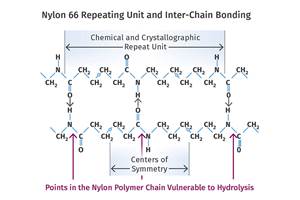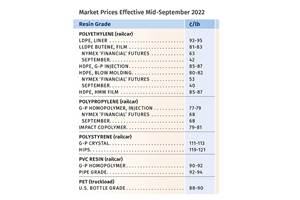Six More Winners of 2016 SPE Auto Innovation Awards
Take a look at top-rated innovations in chassis/hardware, powertrain, process/assembly, safety, environmental, and aftermarket categories.
Take a look at top-rated innovations in chassis/hardware, powertrain, process/assembly, safety, environmental, and aftermarket categories.
I recently reported on the winner of the body interior category, which was also the “grand award winner”, as well as the winners of the body exterior and materials categories of the Society of Plastics Engineers Automotive Division’s 2016 Automotive Innovation Awards.
For those of us that were part of this year’s panel of Blue Ribbon judges, I can tell you that the finalists for the other six categories were just as interesting, making it just as challenging when voting for a “winner”. Take a look.
Chassis/Hardware: Strut Mount. Appearing on GM’s 2016 Cadillac CT6 luxury sedan, these parts represent the first use of a glass-reinforced nylon for strut-mount housings on all four corners of a vehicle and the first application of nylon housings on the front- and rear-suspension systems.
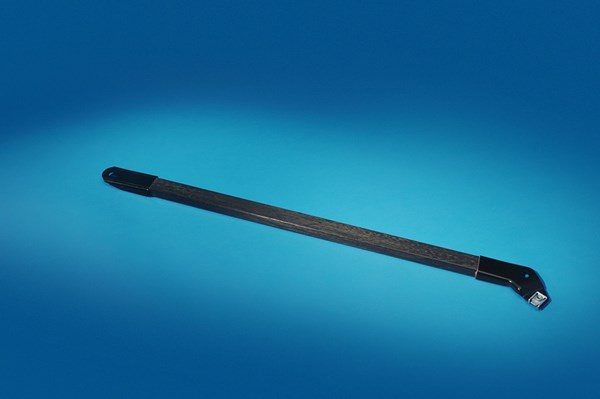
Injection molded by Tier 1 supplier ContiTech North America, these parts integrate common components for both front and rear mounts, and employ a special thread assembly method with a locking feature.
The material used is BASF’s 50% glass-filled Ultramid A3WG10CR nylon 66. These housings reduce mass by 30% versus typical steel and aluminum parts and help to reduce noise transmission through the suspension system. Thanks to modular assembly, this design also offers greater tuning flexibility.
Powertrain: Air-Intake Manifold. Featured in VW’s 2015 EA21 1.6L engines, this is said to be the first air-intake manifold launched in China using 35% glass-reinforced PP—SABIC’s G3135X PP, to replace nylon 66. Injection molded by Tier 1 supplier Hua Tao Ltd., this part provides a 25-30% cost reduction and 15-20% molded-part weight reduction while retaining properties at high temperatures and improving weld strength, plus NVH levels by five decibels. Unique technology that involved finer glass fibers and special sizing reportedly helped meet performance requirements.
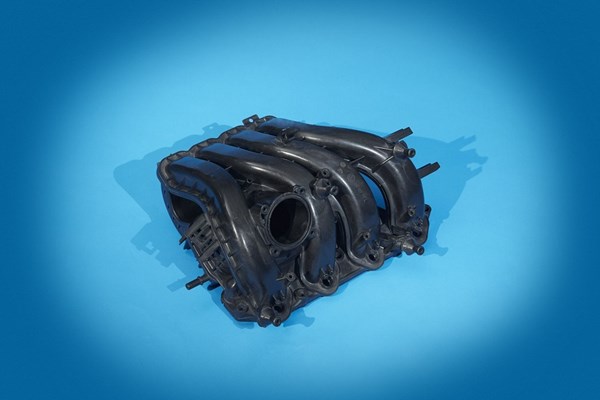
Process Assembly/Enabling Technologies: Robotic Laser Cutting and Welding of TPO Fascia. This application is featured on GM’s Chevy Camaro ZL1 sports car. The Tier I supplier was Magna Exteriors Inc./Magna Exterior-DexSys and the material is injection molding grade Hifax TYC1168X TPO from LyondellBasell, The application entailed the replacement of hydraulic punch and sonic welding with robotic laser cutting and welding of a Class A exterior fascia. Unlike other welding processes, it is not necessary to thicken wallstock in weld areas to prevent readthrough with robotic laser welding of brackets on the backside of the part, and that reduces weight slightly. It also eliminates the need for contoured horns and punches. Clean cuts can be made in one second on the part’s painted side. The dual-function process provides greater flexibility between programs and reduces floor space and tooling costs.
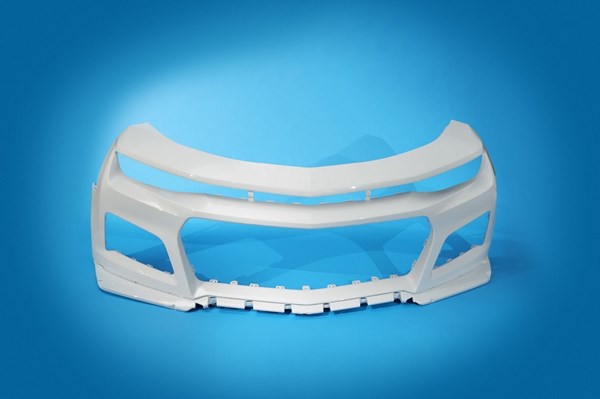
Safety: Seat Cushion Frame and Storage Door. This application, featured on Ford’s 2016 Ford SuperDuty pickup, is reportedly the first time a polymer composite has replaced magnesium in a structural seat-cushion frame and under-seat storage lid for a front center 20% seat with integrated restraint system. Injection molded 40% LFT-PP—Celanese’s Celstran GF40-20 LFT PP—is used by Tier I Royal Technologies Corp. to mold the frame, which also features and expanded PP (EPP) antisubmarine foam block and a lockable cargo-latch.
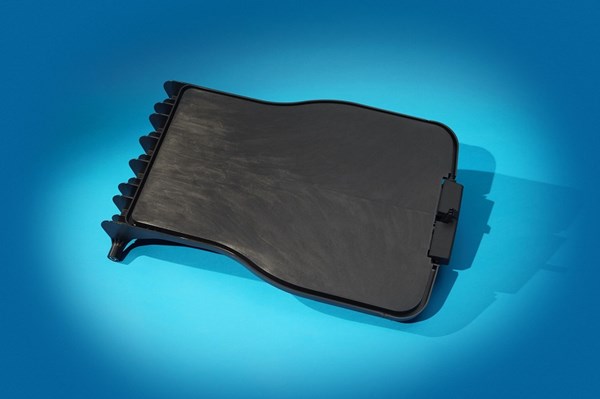
The assembly represents a significant reduction in carbon footprint versus magnesium and has yielded two awarded and two pending patents. This application reportedly is weight neutral and lower cost ($4/unit), and satisfies all safety and crashworthiness requirements. Its flexible architecture allows for updates with further enhancements.
Environmental: Closed-Loop Recycling of Bottles. Recycled post-consumer PET nonwoven fleece is used for multiple applications and featured on GM’s 2016 Chevy Equinox & GMC Terrain cross-over utility vehicles. The Tier supplier is Exo-s/Rogers Foam Co. and the material supplier is William T. Burnett & Co.
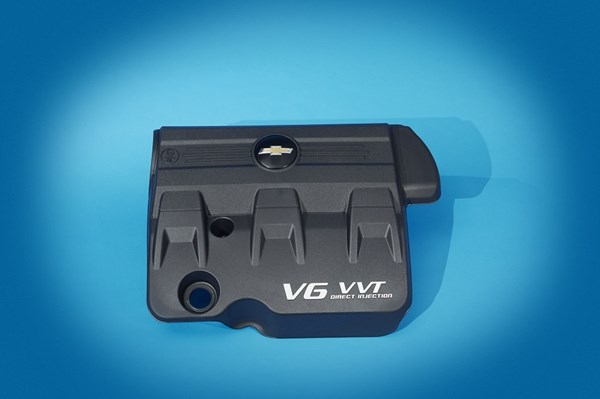
Water bottles collected at GM operations and from the Flint, Mich., area are directed into a supply chain that recycles the material into nonwoven fleece for specific applications including engine manifold cover insulation. They are also used as insulation for coats that convert to sleeping bags for the homeless that are actually made by formerly homeless women as part of a jobs program. Finally, they are used for air filters that purify the air at numerous GM and other manufacturing operations. This innovative, multi-stakeholder, cost-neutral recycling project protects the environment, grows local economies, creates jobs, and helps people ins a sustainable manner. Already 3.5-million water bottles had been repurposed by mid-2016.
Aftermarket: Carbon-Fiber Composite Spoiler. This sole thermoset winner, featured on GM’s 2016 Chevy Corvette sports car and produced by Tier 1 deBotech, Inc., is a one-piece aftermarket epoxy/carbon fiber spoiler—Solvay’s MTM5790 epoxy. It is said to provide a premium carbon composite appearance and to enable the same aerodynamic performance as production three-piece spoilers with different aero variants while also reducing mass by 40%. The spoiler’s unique design and proprietary tooling combines solid wickerbills and an open cavity blade plus integral threaded inserts to facilitate manufacturing and assembly. The one-piece construction offers a cleaner appearance due to reduction of fasteners. The spoiler is offered in both clear coat with exposed weave and painted in carbon flash metallic paint.

In subsequent blog posts I will highlight some of the other finalists in each of those categories that I’m certain you’ll find merit attention.
Related Content
PBT and PET Polyester: The Difference Crystallinity Makes
To properly understand the differences in performance between PET and PBT we need to compare apples to apples—the semi-crystalline forms of each polymer.
Read MoreWhat is the Allowable Moisture Content in Nylons? It Depends (Part 1)
A lot of the nylon that is processed is filled or reinforced, but the data sheets generally don’t account for this, making drying recommendations confusing. Here’s what you need to know.
Read MorePrices of Volume Resins Drop
Price relief is expected to continue through the fourth quarter for nine major commodity and engineering resins, driven by widespread supply/demand imbalances.
Read MoreScaling Up Sustainable Solutions for Fiber Reinforced Composite Materials
Oak Ridge National Laboratory's Sustainable Manufacturing Technologies Group helps industrial partners tackle the sustainability challenges presented by fiber-reinforced composite materials.
Read MoreRead Next
Advanced Recycling: Beyond Pyrolysis
Consumer-product brand owners increasingly see advanced chemical recycling as a necessary complement to mechanical recycling if they are to meet ambitious goals for a circular economy in the next decade. Dozens of technology providers are developing new technologies to overcome the limitations of existing pyrolysis methods and to commercialize various alternative approaches to chemical recycling of plastics.
Read MoreWhy (and What) You Need to Dry
Other than polyolefins, almost every other polymer exhibits some level of polarity and therefore can absorb a certain amount of moisture from the atmosphere. Here’s a look at some of these materials, and what needs to be done to dry them.
Read MoreUnderstanding Melting in Single-Screw Extruders
You can better visualize the melting process by “flipping” the observation point so that the barrel appears to be turning clockwise around a stationary screw.
Read More




















